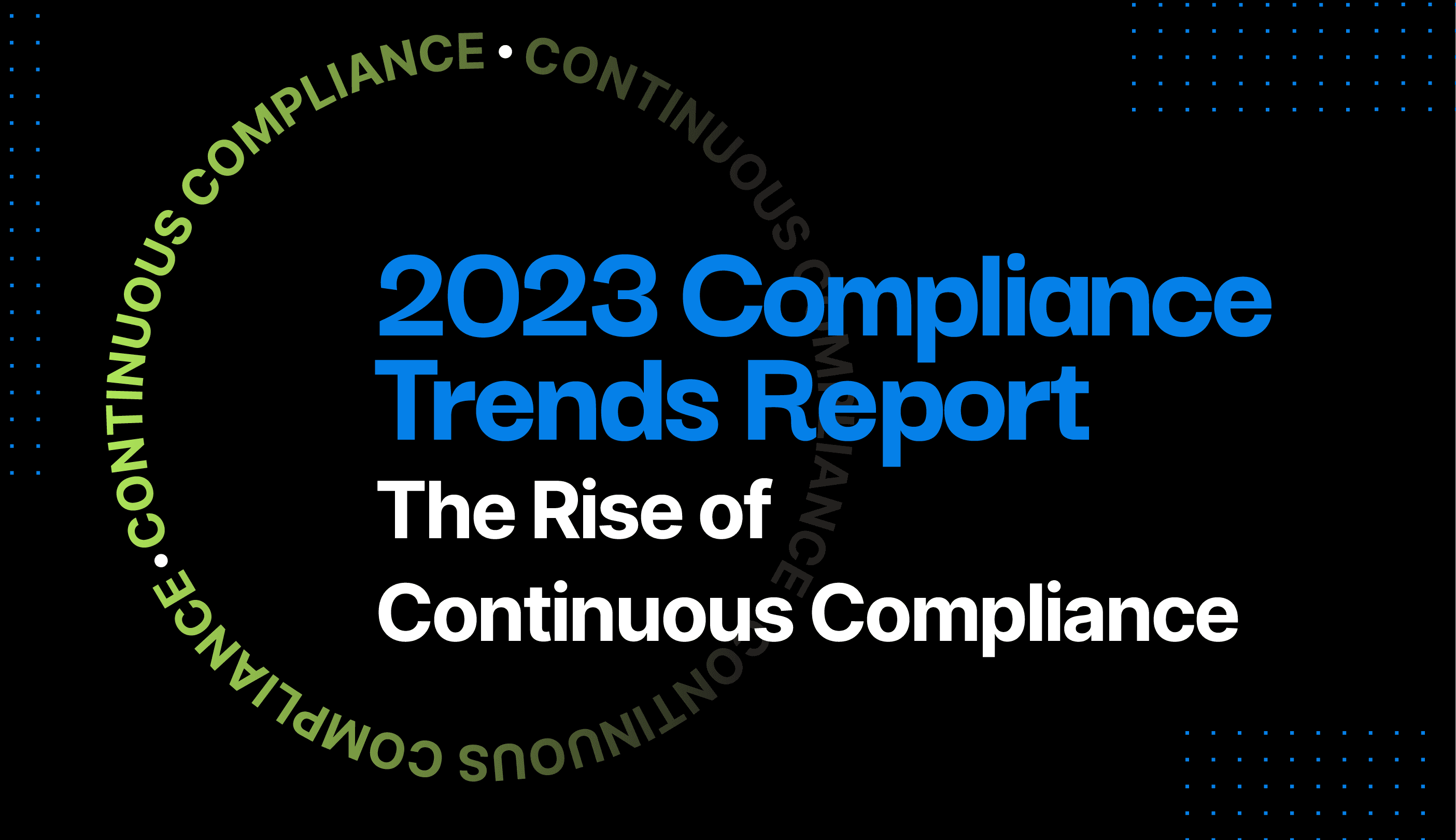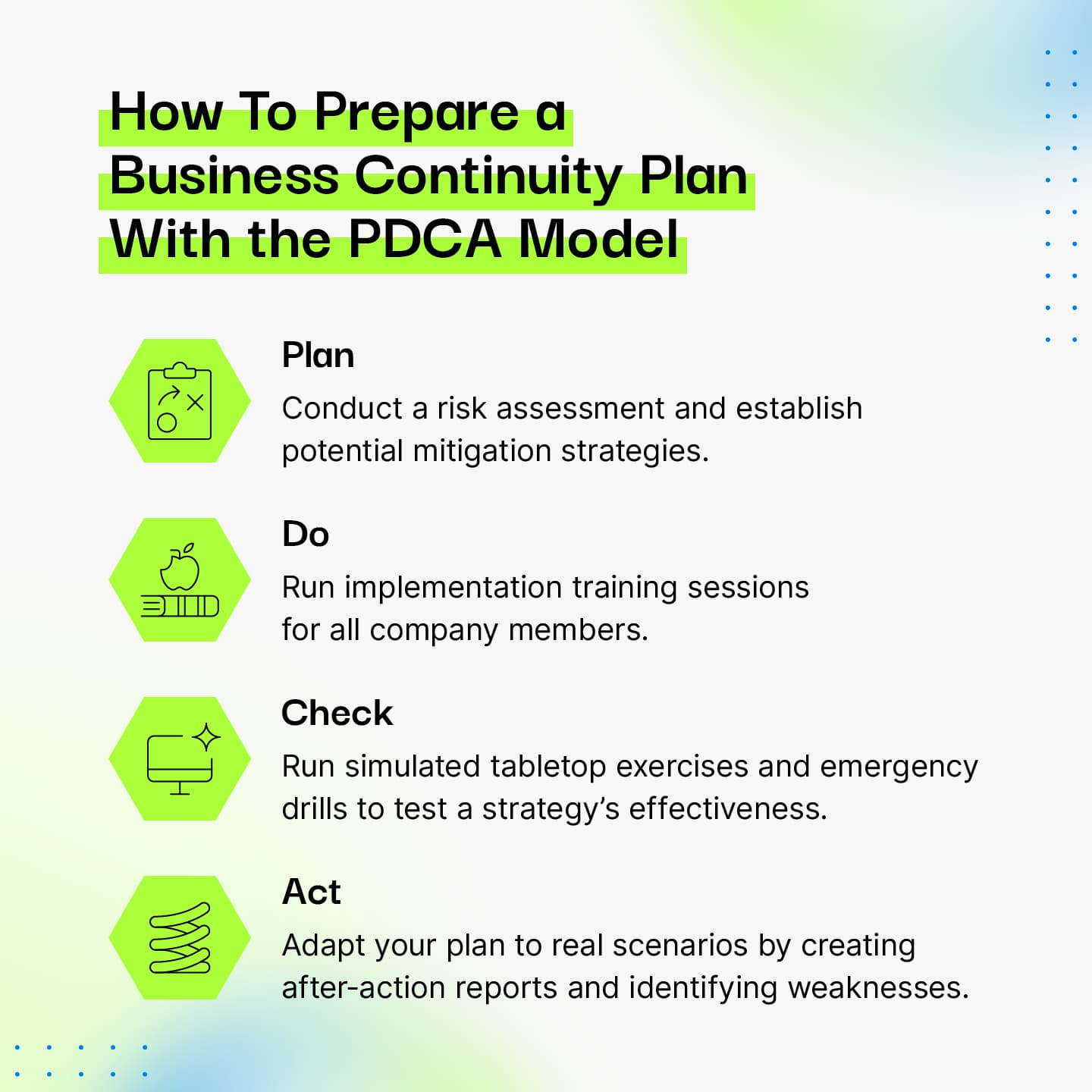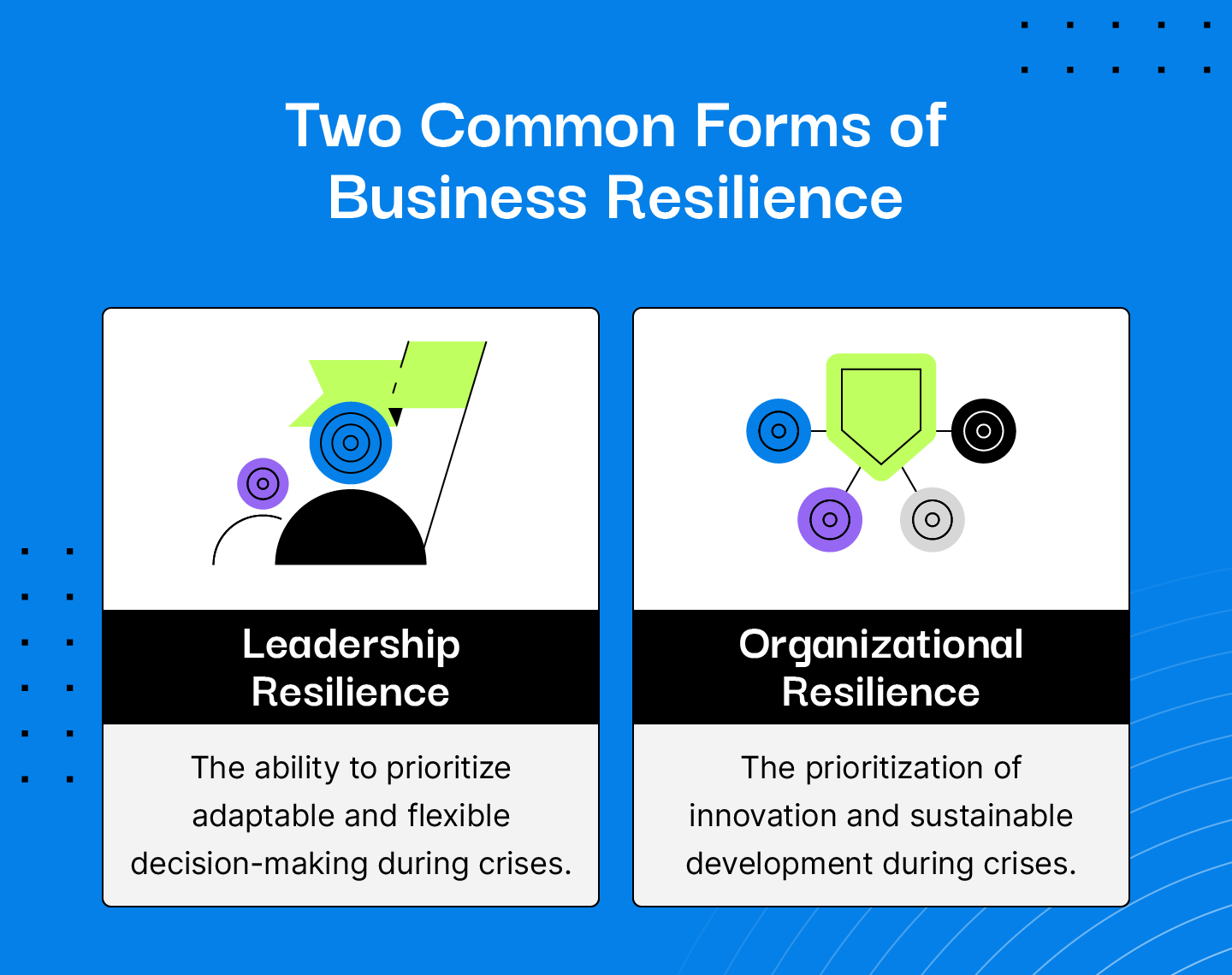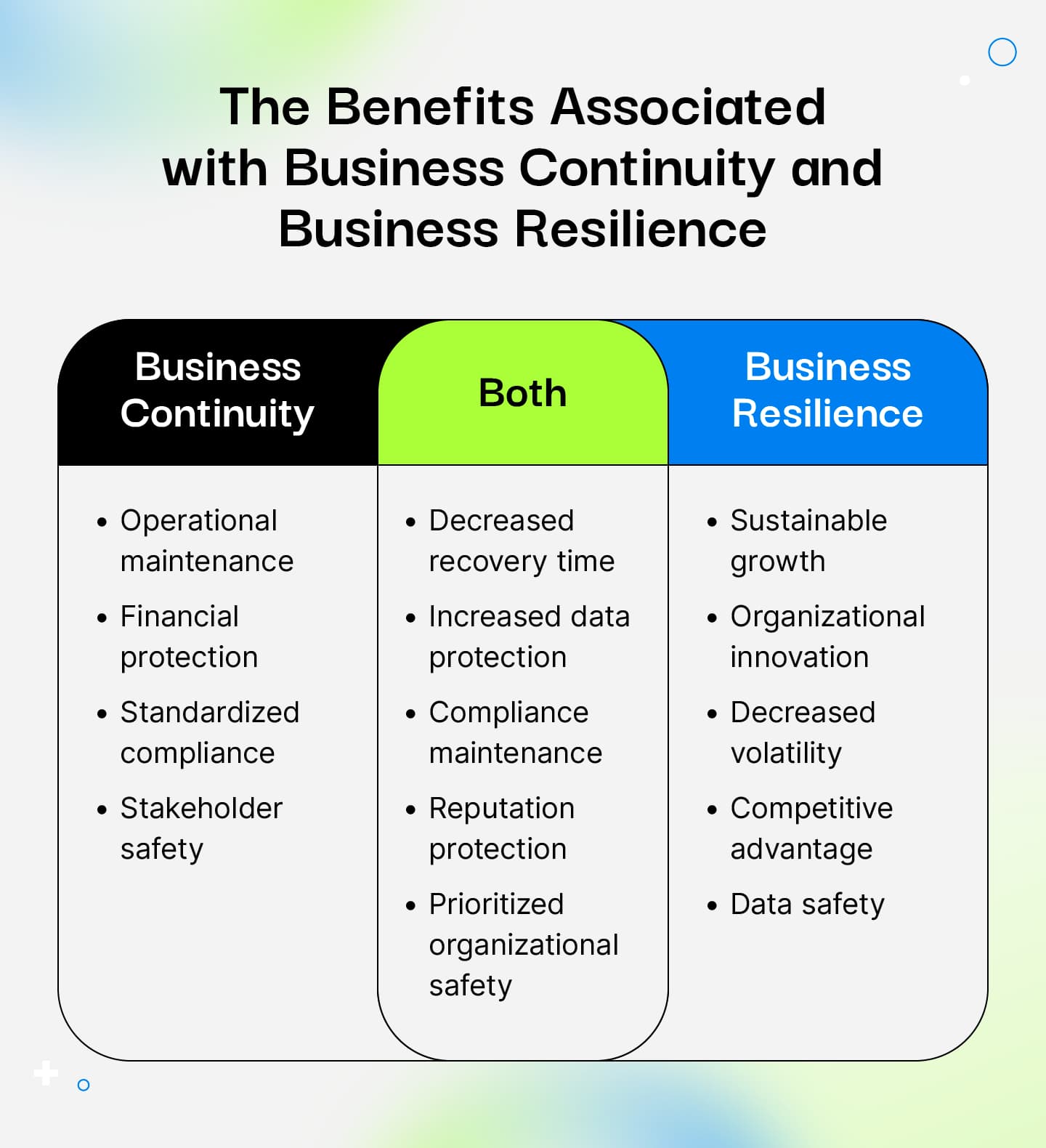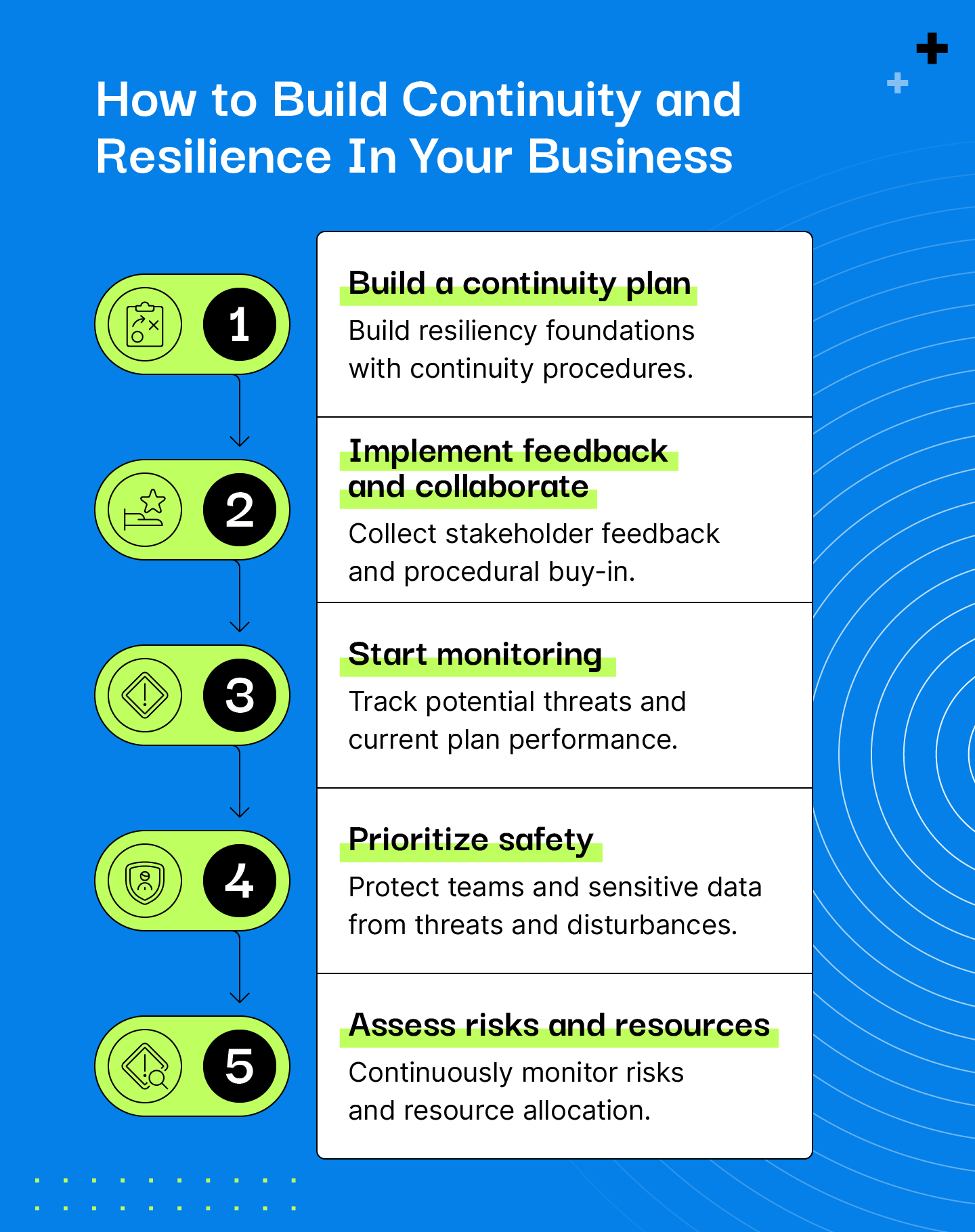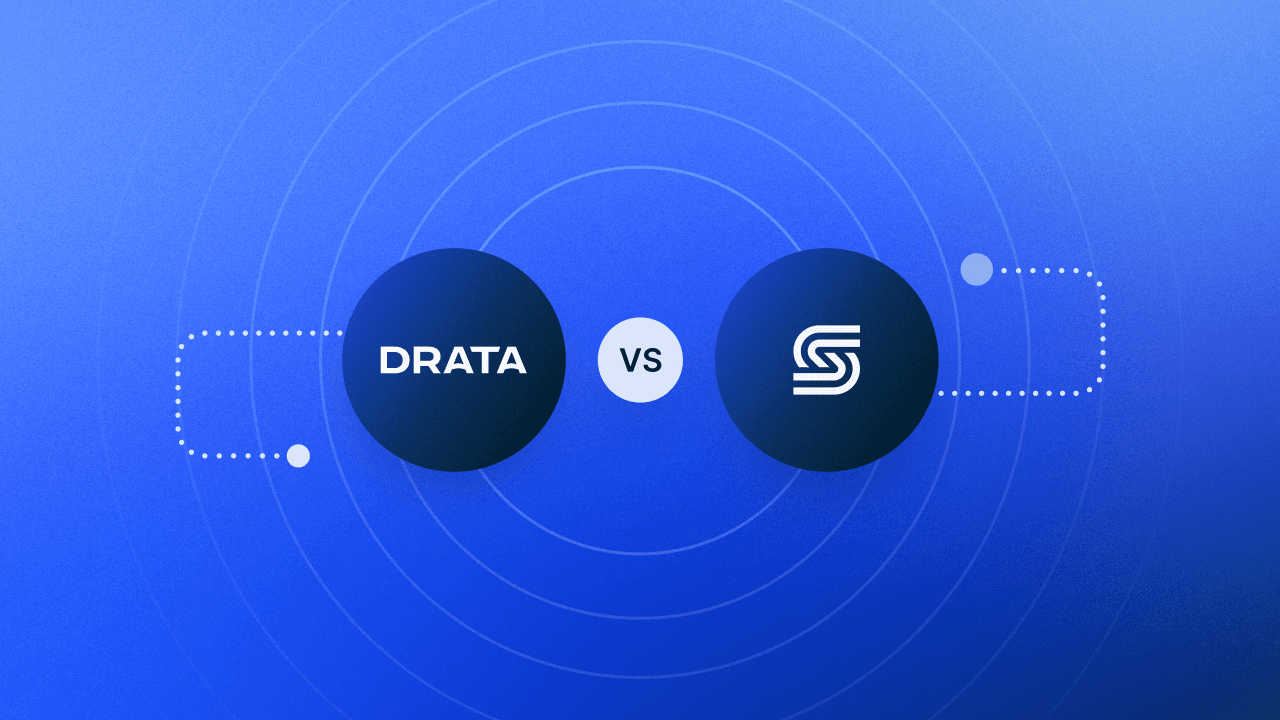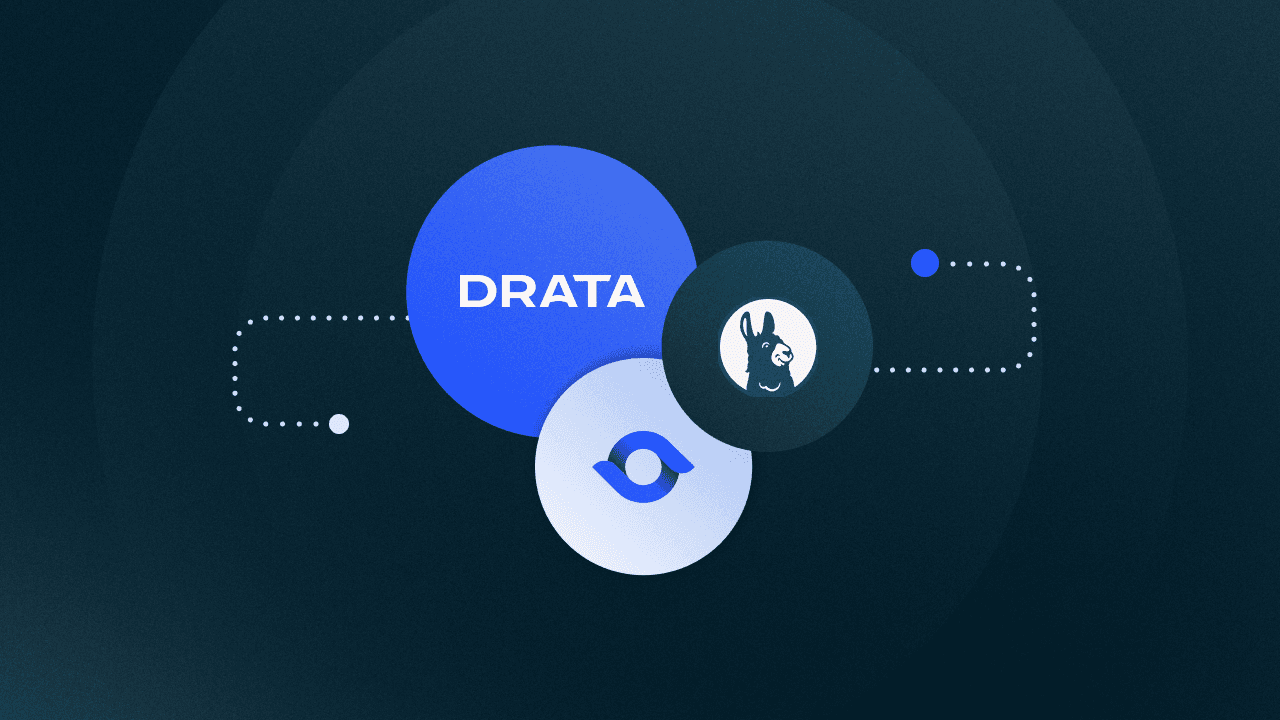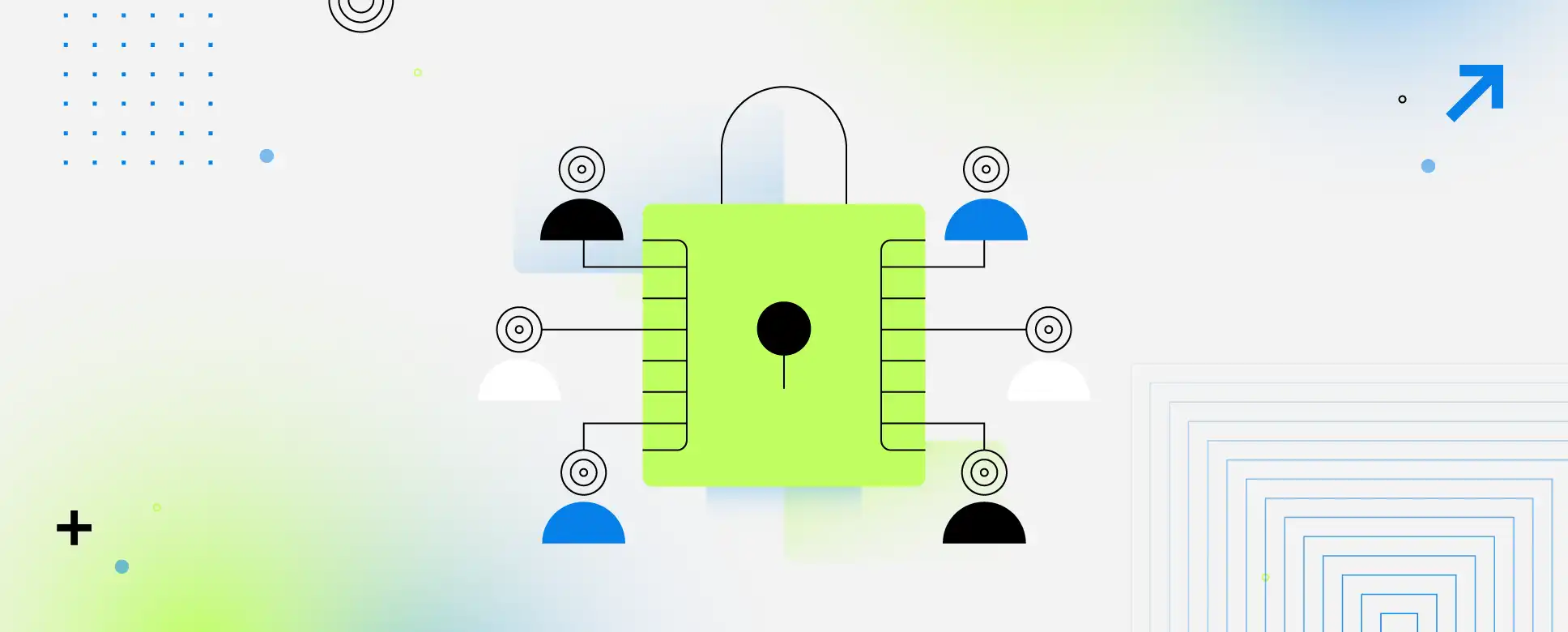Business Continuity and Resilience 101
Business continuity and resilience both fit into an organization’s risk management strategy. However, business resilience tends to be more strategic and dynamic, with an emphasis on organizational flexibility rather than risk mitigation. Both are necessary for business success.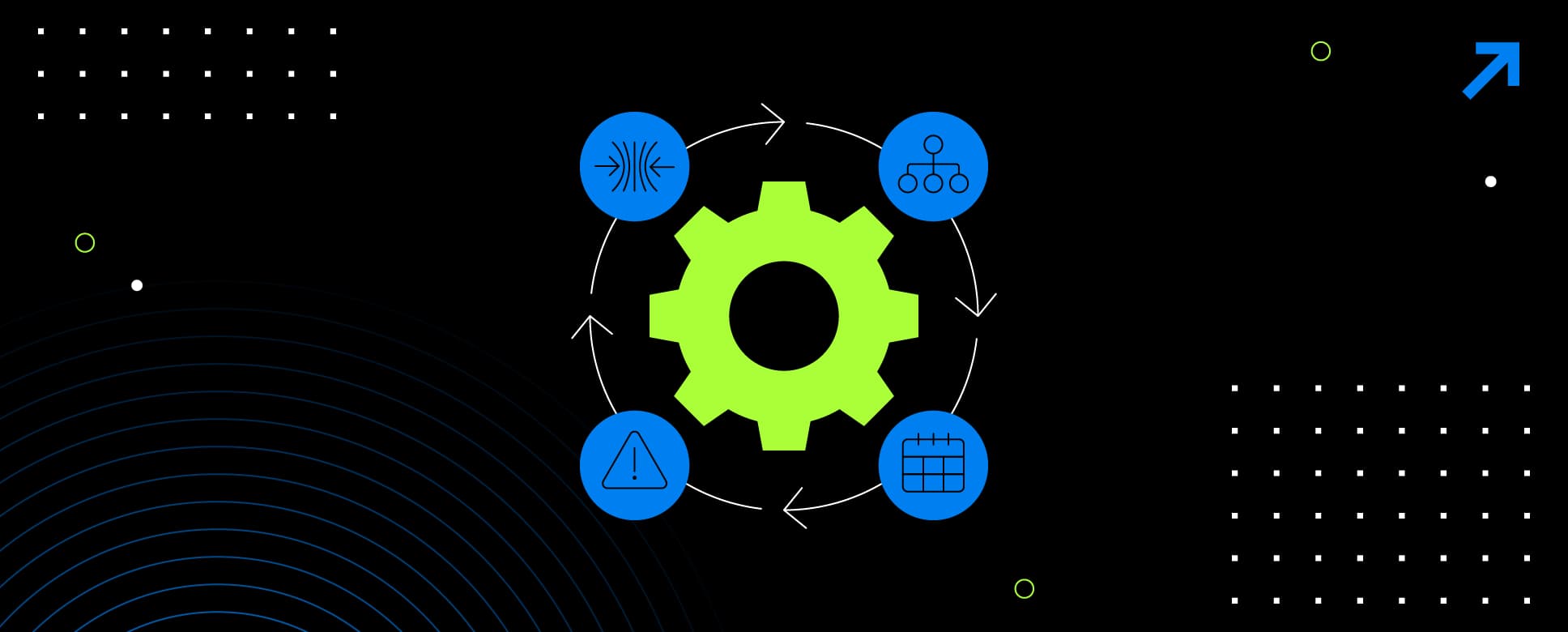
Business continuity and resilience are often discussed as rivals rather than teammates. However, new data shows that more than two-thirds of continuity and resilience managers are required to adopt strategies and skills associated with both business continuity and business resilience, including empathy, relationship building, and process planning.
With new business threats surfacing every day, continuity and resilience are essential to business growth and success. Our guide uncovers the differences between these two terms, how to establish them, and the benefits associated with successful continuity and resilience planning.
What Is Business Continuity?
Business continuity is an organization's ability to continue producing and delivering products or services during and after a business disruption, according to the International Organization for Standardization (ISO). Teams are responsible for ensuring continued critical operations, even in the face of security breaches or natural disasters.
Business continuity planning integrates backup, recovery, and emergency response plans into an organization’s business model. Businesses can build these plans by identifying their recovery point objective (RPO) and using the plan-do-check-act (PDCA) model.
Plan: Conduct a risk assessment to understand your organization’s potential risks. Establish your RPO and brainstorm mitigation strategies.
Do: Run implementation training sessions for all team members. Even those without mitigation tasks should be engaged in the process.
Check: Continuously check the effectiveness of your plans. Update strategies and objectives when new risks arise.
Act: Adapt your plan to real scenarios. Draft after-action reports to identify strengths and weaknesses or propose mitigation strategy updates.
What Is Business Resilience?
According to the ISO, business resilience is an organization's ability to adapt to an ever-changing risk environment and deliver products or services during a disruption, such as major shifts in the market an organization sells into or new technologies that threaten the status quo. Resilience is a more dynamic and strategic approach to risk mitigation than continuity.
Due to its strategic characteristics, business resilience ensures organizations effectively withstand disruptions using operational strategies, including:
Proactive approaches: Teams anticipate disruptions and prepare flexible plans for adapting to and addressing crises.
Dynamic leadership: Leaders allow agile decision-making and prioritize communication transparency during crisis-free times.
Safe culture: Leadership considers safety and empowers team members to prioritize internal safety through training sessions and organizational objectives.
Long-term goals: Resilience plans require long-term planning and goals. Teams must prepare for future business growth and the risks and challenges that may arise.
These strategies can be incorporated individually and holistically. Both leaders and organizations should incorporate resiliency tactics into business strategies to increase overall business resiliency.
Leadership Resilience
Resilience is an essential leadership skill. By prioritizing governance and compliance in accordance with resiliency strategies, leaders can make decisions during disruptions that enable organizational growth. Leadership resilience also allows teams to identify areas of growth before future crises.
Organizational Resilience
Organizational resilience encourages business innovation and provides pathways for sustainable development. Strategic resilience creates unique advantages in the face of long-term crises by developing four characteristics:
Visibility: Internal visibility allows organizations to monitor trends and anticipate disruptions.
Detection: Early threat identification improves response times and prepares teams for oncoming challenges.
Response: Well-prepared response plans enable proactive mitigation planning supported by immediate action during unpredictable disruptions.
Collaboration: Innovation is born through collaboration. Teams of unique individuals identify proactive and reactive responses suitable for unprecedented challenges.
These considerations require organizations to prepare for and adapt to disruptions of all sizes—even those affecting output and data security.
Business Continuity vs. Business Resilience
Business continuity and business resilience have significant differences. For example:
Business continuity refers to the systems and processes necessary to maintain business operations during a crisis.
Business resilience refers to a company’s ability to adapt to changing circumstances during an organizational crisis.
Both successfully prepare organizations for crises, but resilience enables businesses to continue improving processes and growing operations, while continuity simply enables businesses to get through a disruption. This distinction can be observed within these fundamental differences:
Proactive vs. reactive: Resilient organizations proactively prepare for crises. Organizations following business continuity practices react in real time to disturbances.
Possibility vs. actuality: Continuity planning reacts to actual interruptions. Business resilience requires consistent scenario planning and regular training to prepare for many possible disturbance types.
Broad vs. specific goal management: Resilience encourages organizations to prioritize broad goals, whereas continuity requires specific objectives with continual management practices.
Business resilience requires organizations to make foundational changes to their company culture. Resiliency is impossible in a static and rigid environment. Continuity can succeed in such cultures, but the benefits of resilience will be absent.
Benefits of Business Continuity and Resilience
When incorporated into business planning, business continuity and resilience produce various benefits. When continuity and resilience work together, organizations can:
Sustain and pivot business operations during disruptions
Decrease recovery time
Prepare for and protect against financial and data loss
Continue to maintain regulatory compliance
Protect long-term goals
Minimize reputational damage
Prioritize business and information safety
When used alone, continuity and resilience are still beneficial. While organizations may not experience the full realm of advantages offered by the two in tandem, their individual protections are still essential in times of crisis.
Business Continuity Benefits
Business continuity alone produces organizational benefits. These benefits are less dynamic and strategic in nature than those associated with resilience. Organizations prioritizing continuity experience benefits like:
Operational maintenance during crises
Financial protection
Standardized compliance expectations
Enhanced safety and well-being of employees and stakeholders
Business Resilience Benefits
Business resilience creates agile teams — whether or not it's used in tandem with business continuity. Organizations prioritizing resilience experience benefits like:
Sustainable business growth
Organizational innovation
Reputation protection
Decreased financial volatility
Enhanced information security
An achievable and maintainable competitive advantage
Why are Business Continuity and Resilience Important?
Business continuity and resilience are important because they help organizations prepare for crises that could interrupt critical business operations. Organizational threats are abundant and include but are not limited to:
Disease and pandemic crises
Cyber threats
Remote, hybrid, and flex working environment challenges
Natural disasters
Regulatory and compliance changes
Infrastructure weaknesses
To succeed, businesses must prepare for all organizational risks. When working in tandem, continuity and resilience strengthen organizational risk management, increase growth opportunities, and empower managers and team members.
Continuity and Resilience Planning Elements
Organizational survival depends on continuity and resilience. Strong businesses embed continuity and resilience into their cultures by prioritizing the essential elements of each.
Elements of Business Continuity Planning
Before creating a business continuity plan, consider the elements your teams will need to outline, create, and approve. These five elements must be included in an organization’s continuity plan:
Crisis management plan: Crisis management plans prepare organizations for potential risk considerations.
Emergency response plan: Emergency response plans detail mitigation procedures for security and life-threatening crises.
IT disaster recovery plan: As a part of IT risk management, recovery plans outline the processes for recovering information systems, data, and technology assets.
Risk assessment: Risk assessment methodologies identify general and unique harmful risks.
Business impact analysis: A business impact analysis identifies the potential impact of disturbances on critical business operations and assets.
Elements of Business Resilience Planning
The elements of a business resilience plan build upon those of a continuity plan. Resilience plans increase an organization’s preparedness scope from immediate risk to potential risk and include flexibility to adapt to changing circumstances. Consider these forms of resilience during the planning process:
Financial resilience: the ability of an organization to withstand and adapt to events that impact its assets and bottom line
Operational resilience: an organization’s capacity to resist and recover from harmful disturbances
Reputational resilience: an organization’s communication transparency and response to both internal and external threats
Business-model resilience: how a company adopts an agile business model to prioritize operational flexibility and adaptability
Technological resilience: a business’s infrastructure capabilities to protect against cyber threats and security and privacy risks.
5 Steps to Establishing Continuity and Resilience
Ensure your business can handle risks and adapt to disruptions by establishing business continuity and resilience. Here's how to do it in five steps.
1. Build a Continuity Plan
Continuity and resilience go hand in hand. The first step to establishing resilience is to prioritize continuity. First, identify the procedures your organization will follow for short-term disruptions. This step can also help you prepare longer-term goals based on short-term successes. Continuity processes build the foundation for future resiliency systems.
2. Implement Feedback and Collaboration
Business continuity and resilience are only obtainable with full organization and team buy-in. Implement a consistent feedback loop and update procedures based on requests, observations, and criticism. Allow employees and all stakeholders a voice in the resiliency process, and consider feedback for both continuity and resilience plans.
3. Start Monitoring
Administer monitoring across your organization. Follow the strengths and weaknesses of your current continuity and resilience plans, then update these plans based on past performances and potential risks. Track and monitor threats to prepare teams for potential disturbances and use training sessions to construct strong foundations.
4. Prioritize Safety
Safety comes in numbers and preparation. Protect your teams and sensitive data with continuity plans and risk assessments. Emergency response plans and IT disaster recovery plans also provide additional safety nets for organizations. Adopt a constant state of readiness and preparedness to effectively defend employee safety from all threats and disturbances.
5. Assess Risks and Resources
To establish business resilience, assess your organization’s risks and resources continuously. Do not leave strategic planning to quarterly or yearly meetings. Instead, redirect resources as needed and update plans based on new threats. Managers should reform internal objectives, operations, and systems based on external factors and resource availability.
Facilitate Business Continuity and Resilience With Drata
Business continuity and resilience are best built on continuous compliance. With automated security and regulatory compliance tracking, Drata streamlines organizational planning and compliance from beginning to end.
Instead of letting risks determine your preparedness plans, let more than 150 pre-mapped controls designed to respond to ever-changing threats facilitate your business continuity and resilience planning. Protect your teams' safety, your data's security, and your business's growth with automated risk management procedures.
Schedule a demo with our team to learn more today.
2023 Compliance Trends Report
Drata surveyed 300 established and enterprise organizations to tap the pulse of the state of risk and compliance. In doing so, we identified related trends, perceptions, and how compliance impacts the business. This year, the primary takeaway is that a mature compliance program will accelerate a business, not slow it down.
